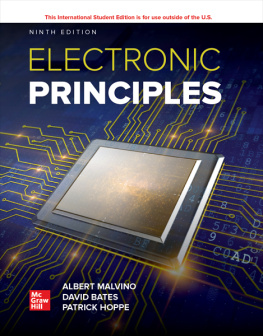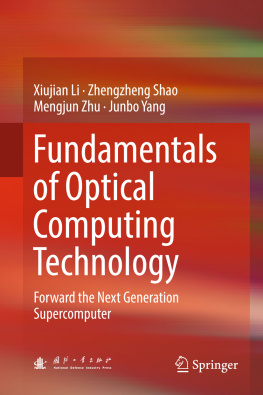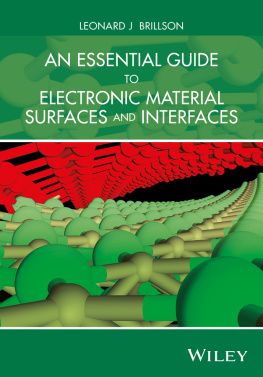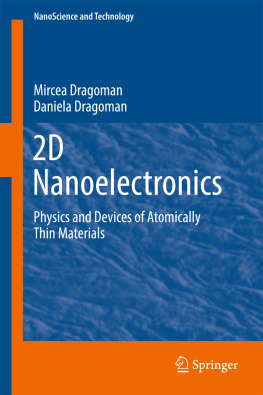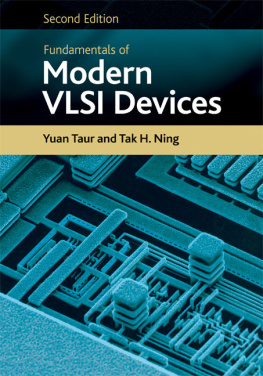Graduate Texts in Physics
Series Editors
Kurt H. Becker
NYU Polytechnic School of Engineering, Brooklyn, NY, USA
Jean-Marc Di Meglio
Matire et Systmes Complexes, Btiment Condorcet, Universit Paris Diderot, Paris, France
Morten Hjorth-Jensen
Department of Physics, Blindern, University of Oslo, Oslo, Norway
Bill Munro
NTT Basic Research Laboratories, Atsugi, Japan
William T. Rhodes
Department of Computer and Electrical Engineering and Computer Science, Florida Atlantic University, Boca Raton, FL, USA
Susan Scott
Australian National University, Acton, Australia
H. Eugene Stanley
Center for Polymer Studies, Physics Department, Boston University, Boston, MA, USA
Martin Stutzmann
Walter Schottky Institute, Technical University of Munich, Garching, Germany
Andreas Wipf
Institute of Theoretical Physics, Friedrich-Schiller-University Jena, Jena, Germany
Graduate Texts in Physics publishes core learning/teaching material for graduate- and advanced-level undergraduate courses on topics of current and emerging fields within physics, both pure and applied. These textbooks serve students at the MS- or PhD-level and their instructors as comprehensive sources of principles, definitions, derivations, experiments and applications (as relevant) for their mastery and teaching, respectively. International in scope and relevance, the textbooks correspond to course syllabi sufficiently to serve as required reading. Their didactic style, comprehensiveness and coverage of fundamental material also make them suitable as introductions or references for scientists entering, or requiring timely knowledge of, a research field. publishes core learning/teaching material for graduate- and advanced-level undergraduate courses on topics of current and emerging fields within physics, both pure and applied. These textbooks serve students at the MS- or PhD-level and their instructors as comprehensive sources of principles, definitions, derivations, experiments and applications (as relevant) for their mastery and teaching, respectively. International in scope and relevance, the textbooks correspond to course syllabi sufficiently to serve as required reading. Their didactic style, comprehensiveness and coverage of fundamental material also make them suitable as introductions or references for scientists entering, or requiring timely knowledge of, a research field.
More information about this series at http://www.springer.com/series/8431
Keh Yung Cheng
Department of Electrical and Computer Engineering, University of Illinois at Urbana-Champaign, Urbana, Illinois, USA
Department of Electrical Engineering, National Tsing Hua University, Hsinchu, Taiwan
ISSN 1868-4513 e-ISSN 1868-4521
Graduate Texts in Physics
ISBN 978-3-030-51901-8 e-ISBN 978-3-030-51903-2
https://doi.org/10.1007/978-3-030-51903-2
Springer Nature Switzerland AG 2020
This work is subject to copyright. All rights are reserved by the Publisher, whether the whole or part of the material is concerned, specifically the rights of translation, reprinting, reuse of illustrations, recitation, broadcasting, reproduction on microfilms or in any other physical way, and transmission or information storage and retrieval, electronic adaptation, computer software, or by similar or dissimilar methodology now known or hereafter developed.
The use of general descriptive names, registered names, trademarks, service marks, etc. in this publication does not imply, even in the absence of a specific statement, that such names are exempt from the relevant protective laws and regulations and therefore free for general use.
The publisher, the authors and the editors are safe to assume that the advice and information in this book are believed to be true and accurate at the date of publication. Neither the publisher nor the authors or the editors give a warranty, expressed or implied, with respect to the material contained herein or for any errors or omissions that may have been made. The publisher remains neutral with regard to jurisdictional claims in published maps and institutional affiliations.
Cover image: Victoria / Fotolia
This Springer imprint is published by the registered company Springer Nature Switzerland AG
The registered company address is: Gewerbestrasse 11, 6330 Cham, Switzerland
Preface
Since 1990, the creation of the World Wide Web and the strong surge of personal computer popularity, which promotes Internet usage, created a steep increase of Internet traffic. In the meantime, wireless communication systems also have evolved rapidly through several generations with ever-increasing bandwidth. To handle the vast amount of information traffic flow, high-speed and wide-bandwidth networks are needed, which require IIIV compound semiconductor-based high-speed electronic and photonic devices. Furthermore, the realization of the p-type GaN not only led to widespread applications of III-nitride-based light-emitting diodes (LEDs) for solid-state lighting and full-color displays but also unlocked the opportunities for the development of next-generation power electronics using wide-bandgap semiconductors. On the other hand, miniaturization of the feature size of silicon-based integrated circuits is rapidly approaching the limit of Moores law. Taking advantage of the very high electron mobility of some IIIV alloys, the integration of compound semiconductor devices on silicon offers another opportunity for future developments. So the field has continued to expand rapidly. Although a number of books devoted to specific subjects on compound semiconductors and devices are available with the emphasis on the state of the art, a single monograph providing a complete discussion of the whole field is still lacking.
It is not the purpose of this book to give an exhaustive treatment of compound semiconductors and devices. Rather, this book conveys the relevant fundamental physics, and material and device concepts, of IIIV compound semiconductors in a coherent manner within a single text, so as to provide the reader with basic concepts and ideas needed for understanding related literature and developments. The preliminary concepts gained also serve as foundations for more advanced studies of compound semiconductor-based optoelectronics and high-speed electronic devices. The content of this book was developed based on a one-semester course for beginning graduate students and advanced seniors in the Department of Electrical and Computer Engineering (ECE) at the University of Illinois at Urbana-Champaign (UIUC). Normally, the students in this course have the background in electromagnetic theory and have been exposed to semiconductors at the level of Streetman and Banerjee, Solid-State Electronics Devices, 6th ed. (Prentice Hall 2006). Certain students may have gained the knowledge of solid-state physics. Students from other engineering disciplines such as materials science and engineering also attended the class. Because of the diverse background of students interested in these subjects, introductory materials are included throughout the book to help bring all students to the same starting point.


